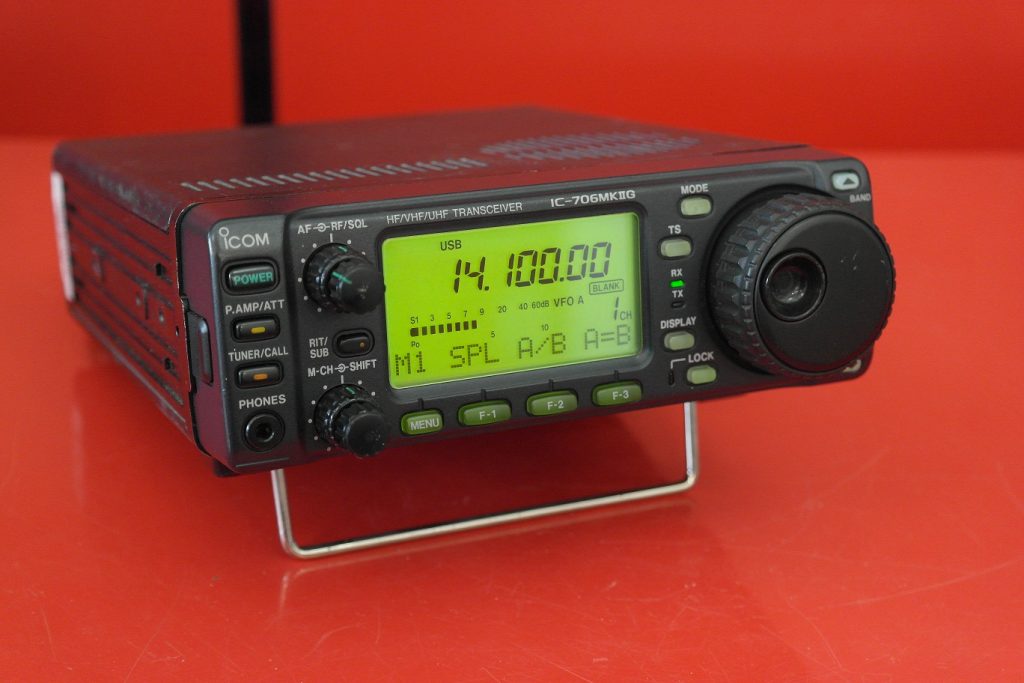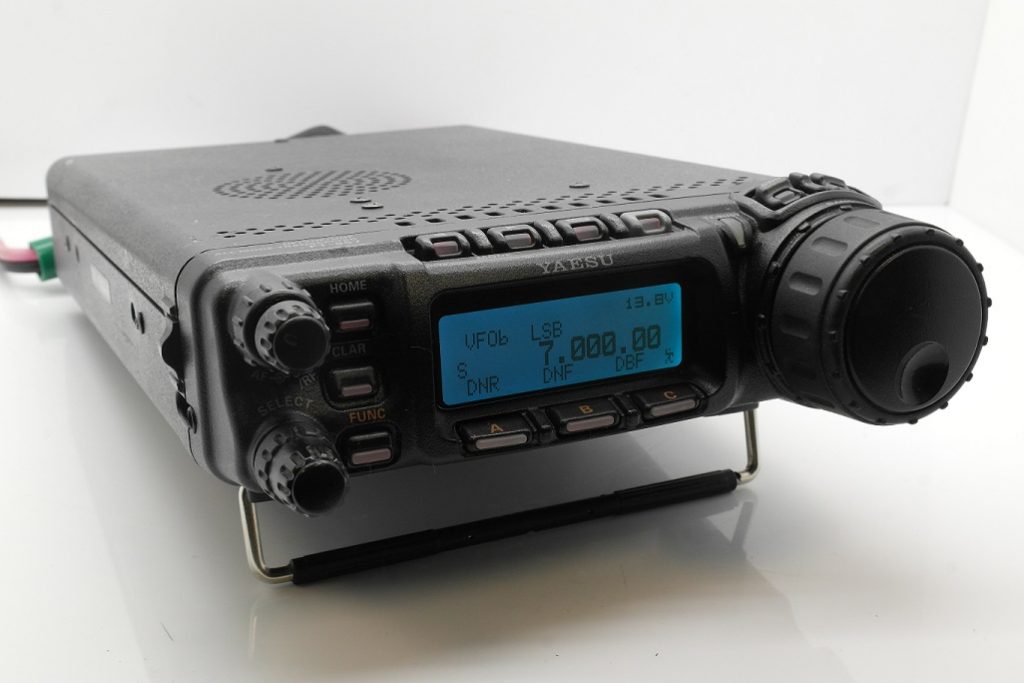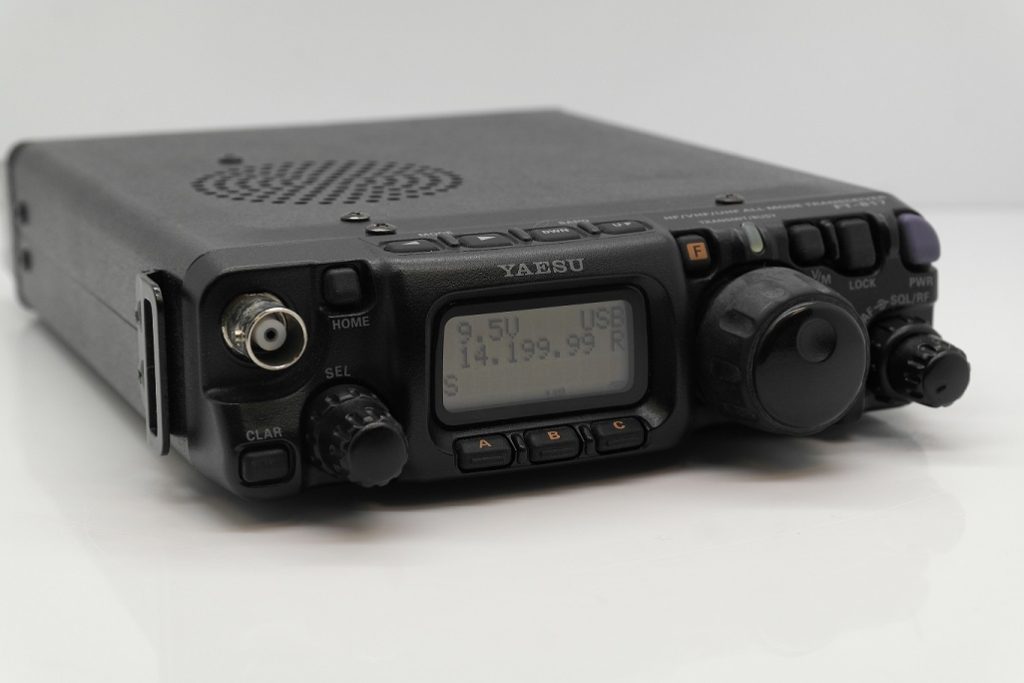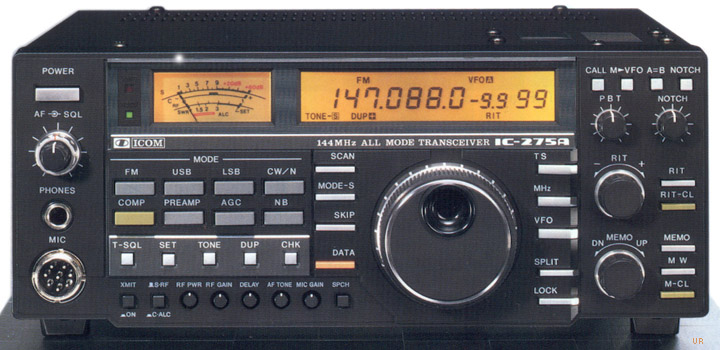Talk to Radio Society of Harrow can be download here:
and can be watched on YouTube here: https://www.youtube.com/watch?v=zDLptJlqXTM
I am far from being an expert in VHF contesting, I’ve only been doing it about 8 years and there is a lifetime of learning to be done! That being said hopefully this guide will be helpful to beginners and help you get started in what can be a very enjoyable aspect of amateur radio.
Please read the guide in the spirit of the wonderful Hitchhiker’s Guide to the Galaxy mindful of the quote: “The Hitchhiker’s Guide to the Galaxy is an indispensable companion to all those who are keen to make sense of life in an infinitely complex and confusing Universe, for though it cannot hope to be useful or informative on all matters, it does at least make the reassuring claim, that where it is inaccurate it is at least definitively inaccurate.” (with due credit to Douglas Adams).
If you find this guide helpful and want to know more why not join the Drowned Rats Radio Group? We are a small and friendly contest group and we would be delighted to help you on the journey whether you interest is operating from the comfort of your shack in a short contest or braving the elements (where do you think we got our name from!) and joining us for one of our field events where we operate a top class well equipped field station – all training is provided. Find out more at www.g3rat.com or look at the Drowned Rats page on this Blog for a little more info and some photos of us doing our thing! You can email me here if you have any questions.
The following guide focuses on the RSGB UK Activity Contests (UKAC) but the advice will also apply for many other contests.
I look forward to working you in a contest very soon!
73, Carl M0ICR.
Part 1 – Getting Started
Why Contesting? to follow
Location, location, location to follow
Gear
To get you started you don’t need to spend a lot of money on new gear. Most amateur will have a multi-mode DC to daylight transceiver which will be more than adequate to get you going. The key thing is that you really do need a rig with SSB so your FM only handheld is unlikely to suffice. You may be lucky enough to own a radio like to excellent SDR Icom 9700 or 7300 but an older radio such as those listed below will be just fine for starters: Yaesu FT817/857/FT897/FT847/FT991, Icom 706, Kenwood 2000.
There are lots of experts out there (with varying degrees of expertise!) who will tell you that for all manner reasons none of these radios are suitable but my advice is to ignore them for now, in any case if you’re just starting out you’re more than likely to already have one of these black boxes. BUT, and I can’t emphasise this enough, make sure you set up the radio correctly, don’t overdrive it and hammer the ALC and you should be fine (even with a FT991 … but I wouldn’t recommend connecting an amp to one from a hilltop site!). You can make a nuisance of yourself with a radio costing much more if you don’t operate it properly …. RTFM!

FT991 
FT847 
TS2000 
IC-706 
FT857 
FT817
Equally, if you manage without the bells and whistles then there are some first class even older radio out there (which can be bought relatively cheaply on eBay and at rallies): Examples include Yaesu FT221, FT225, Icom IC-275, IC-475, Kenwood TR751, 451. Even your dusty old FT290 or FT790 will get you going. Note: Many of these older radios will be single band only.

Icom IC275 
Yaseu FT225 
Yaesu FT290 Mk1
My recommendation is the Icom 7300 for 4m and 6m and the Icom 9700 for 2m, 70cm and 23cm. Your mileage may vary (as they say over the pond!).
I’ll cover transverters in a later section.
One last thing, it’s a good idea to use a headset and footswitch – by no means essential but its easier to hear the weaker signals with a headset and the footswitch will ‘save a hand’ when you are faffing about with logbooks, computers and a mug of hot tea!
Antennas and Polarisation
To follow
When and what?
In this section I am going to focus on RSGB contests only (and even then I am only going to pick out a few to whet your appetite).
As a useful primer you should start here from the RSGB’s own getting started guide: RSGB Contests (rsgbcc.org)
By far the best way to get started is to dip your toe in the regular (pretty much twice weekly) RSGB UK Activity Contests (UKAC for short).
The UKAC tend to run for 2.5 hours on a weekday night (Tuesdays and Thursdays) with a different band each UKAC night. I’m going to be referring to the RSGB Website quite a bit in this guide, and our first RSGB link takes you to the VHF contest calendar here: 2020 calendar (rsgbcc.org)
Update: The RSGB VHF Contest Calendar for 2021 is here: https://www.rsgbcc.org/cgi-bin/readcal.pl?year=2021
I’ll leave you to read through that, I’m certainly not going to repeat it all but simply highlight a couple of things: (1) Note the different entry categories (determined largely by how much power you are running), (2) Read an special rules for the contest and have a look through these very useful links from the RSGB: 2020 VHF Contest Rules (rsgbcc.org) (Updated link for 2021 to follow)
If you’ve got this far make yourself a nice cup of tea, that’s quite a lot take in. Again, if you have any questions just ask, you will find VHF contesters a friendly bunch (mostly!) and more than willing to help get you going.
If you’re going to enter the UKAC consider allocating your points to a club, you keep your points for individual league tables but your donated points to a club mean you can take part in a team effort to aggregate your points with others in your club to see your club move up the league tables?
You don’t have a club to donate your points to? How about joining the Drowned Rats? Newcomers are very welcome to join us. See here for more information!
Your Locator Square
Do you know your locator square? Why not!
Don’t worry it’s easy to find out if you don’t know it. There’s a useful guide here so please excuse me if I don’t go through locator squares in detail here.
This website allows you to zoom in to your operating location and determine your precise 6 figure grid reference: TK5EP’s QRA locator(and more) map (egloff.eu)
A valid contest QSO
Well done for getting this far! Your on your way to your first UKAC QSO! But before you pick up the microphone the first thing to do is listen! Get a feel for the content and brevity of the contest QSOs (the sequence is important). You now have two choices: (1) To search and pounce or (2) to call CQ. Search and Pounce is where you tune to a station calling CQ and give them a call, Calling CQ (should be obvious) is when you find a clear frequency in band and put out a call for others to reply to. Part of the skill of doing well in a contest will be getting the balance right between how much you S&P and how much you spend calling CQ.
The valid QSO include 4 parts: His callsign, the signal report you are giving him (typically between 51 and 59 – note that unlike HF contests we give accurate signal reports on VHF and above!), Serial number and your locator.
So, if you are working me (M0ICR) and I am the first station you have worked in the contest, and you are in IO92FG your exchange might be something like this:
“M0ICR you are five and nine, serial zero zero one, in India Oscar Nine Two Foxtrot Golf back to you”
or more simply:
“M0ICR 59 001 IO92FG”
I might come back with something like (assuming you are M7ABC):
“M7ABC, Roger thank you, you are 57 003 IO91SO back to you”
and bar the 73’s and pleasantries that it! You log the 57 003 IO91SO (remembering the time if your paper logging!) and you’re now ready to work you next station (who will now be your 002). Simple? Have a listen, you’ll soon get the hang of it. Don’t be afraid to repeat the information, or ask for it again, if you conditions are difficult.
Multipliers and Scoring
Not all contests are scored in the same way, but for the purposes of this guide I am focusing on the 2m UKAC (the same applies for the 4m, 6m, 70cm and 23cm UKAC).
You score 1pt for every Km distance you work, there is then a bonus (multiplier) of 500pts for each 4 figure locator you work (first 4 digits). In the 2m UKAC your score will be the total Km you work + 500 points for each unique 4-fig square you work. For example, in a contest you work a total of 2650Km and 6 squares (lets say for sake of argument IO80, IO90, IO91, IO92, JO01, JO02). Your total score is 2650 + (6 * 500) = 5650 (if my maths hasn’t gone wonky!). The morale of the tale: multipliers are really important if you want to do well – it’s worth spending the time to seek out unique ones for those juicy 500pts. Remember you only get the bonus once, if you work 10 stations in IO91 you only get the 500pts the first time.
For interest here is a UK/North Europe map with locators shown:

Logging your QSOs
You can of course use a paper log if you wish, or a general logging program like the HRD Logbook or Logger 32. There is also often an option to use an online logger to transcribe your paper log from (although, frankly, it’s a pretty tedious affair and I wouldn’t recommend that if you have more than a handful of QSOs to log. N1MM+ is an excellent logger and I use that for heavy duty HF contesting, but for most UK VHF contests I recommend for it’s simplicity and features the Minos Logging software available to download for free here: Minos Logging Software
Submitting your log and waiting for the results
The log upload process is fairly straightforward if you are using Minos Logging Software. Save your log as an *.edi file and then upload it following the link on the RSGB webpage making sure you select the correct contest from the drop down list. The page to upload your log for 2020 is here: Contest Logfile Uploader (rsgbcc.org) I will update it with the 2021 link once it’s published.
More Information
Finally, some other websites I recommend taking a look at: to follow
Some final tips
Do:
* Give it a go!
* Ask questions
* Set up your radio properly so as to avoid splatter and interference to others
* Try and get the information in the correct sequence (write it down as a crib whilst you’re starting?) remember it’s Signal Report, Serial Number, Locator
* Listen to a couple of UKAC contests first to get the hang of things
* If you’re calling CQ on a ‘clear’ frequency listen for a minute to make sure it really is clear and of course it’s polite to then ask if the frequency is clear!
* Join a group (did I mention the Drowned Rats? www.g3rat.com)
Part 2 – Moving On
If there is interest I will write a Part 2 (and maybe more) looking at subjects such as the following in more detail:
* Software aids such as KST, KST2me, AirScout
* Transverters
* Machine Generated Modes in contests
* Anything else I can think of!
…. and finally
Anything to add? If you disagree or have your own tips please do comment on this page. Equally if you’ve found this page helpful or you have thoughts you wish to share on how this page could be improved please make a comment.
…. one last thing, did I mention the Drowned Rats Radio Group? If you have any interest at all in VHF DXing and contesting you could do a lot worse than join us! More info here: www.g3rat.com
Enjoy your contesting!
73, de Carl M0ICR

A test comment by the author!
Splendid Carl
I know we haven’t reached aerials yet but don’t expect to do well on SSB with a vertical. Any sort of horizontal aerial even if it is as simple as a dipole or a halo is infinitely superior to a vertical.
Keep up the good work
John G8XTJ IO91PQ
Thanks John